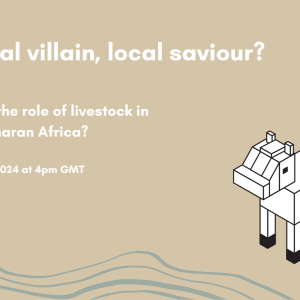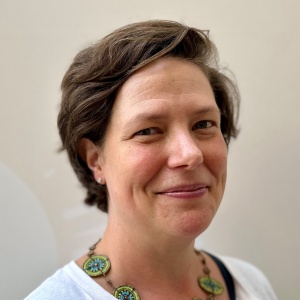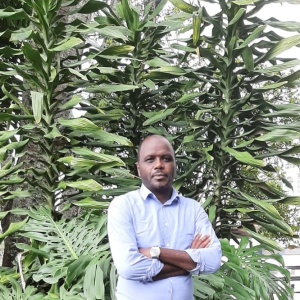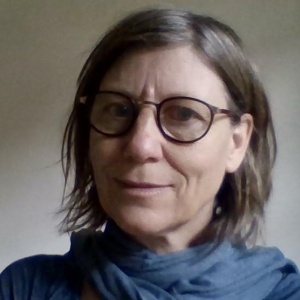
This event was hosted by TABLE and Cornell Food Systems & Global Change on 28 March 2024 and took the format of a panel discussion with:
Dr Tara Garnett (director of TABLE);
Mario Herrero (Cornell University);
Laura Cramer (ILRI);
Guyo Roba (ILRI)
An Notenbaert (CIAT Kenya).
Summary
Globally, the livestock sector is increasing but shifting and its environmental impacts are too narrowly considered.
Narratives around livestock in OECD countries are very different to those in low and middle income countries, making polarisation in livestock debates particularly unhelpful. The livestock sector globally is increasing, but this varies between species: while there is a significant increase in poultry consumption, beef is stagnating. The land footprint of the livestock sector is huge, and this and other environmental impacts need more attention alongside GHG emissions. While sectoral growth is being achieved in some places by sustainable intensification, increasing animal numbers are elsewhere driving production, something incompatible with reduction of net emissions. Reductions in consumption are also required in some places by association with obesity and non-communicable disease.
Alongside the global picture, livestock remain extremely important in Sub-Saharan Africa and support to the sector can contribute to social and environmental aims.
Consumption levels are enormously different between SS Africa and, for example, the USA, and there is room for increase without it getting anywhere near Western levels. There is still a significant need for nutrient-dense foods in Sub-Saharan Africa and similar regions for food security and nutrition. Livestock offer this alongside income resilience and some context-specific environmental benefits. Context should inform the efficiency and intensification questions – low-producing animals are also hardy. Laura flagged that as 80% of Kenyan land is arid or semi-arid, and unsuitable for crop farming, pastoralism is the best use of land.
Oversimplification misses key differences and diversity in production systems (Guyo Roba). The lack of nuance – and geographical specificity - in the livestock debate has had detrimental effects. It has already disrupted international climate negotiations, and this may well inhibit livestock development in Sub-Saharan Africa. Projects are limited in their ability to raise funds that would help farmers by difficulties in getting funding for livestock development.
Sub-Saharan Africa should avoid going down a Western production and consumption route in terms of both systems and end goals
More animal-sourced foods are necessary in Sub-Saharan Africa, but that necessity does not extend to levels of consumption in the Global North, where reductions are vital. There is an opportunity for the Global South to learn from mistakes made in the Global North that have led to health and equity issues, and those conversations need to be had in the Global South. Systems are changing rapidly in terms of economy, land use and technology, and Sub-Saharan Africa’s young population only increases that dynamism.
The Global North has lost an element of husbandry alongside a focus on technological development. There is a risk that reductions in Europe and Western countries will simply lead to shifting the environmental footprint elsewhere. Locally grown feeds will need to be explored. Structural production has shifted towards smaller animals, but there are contextual limits to this, e.g. aquaculture is constrained by ecology. Poultry are good recyclers in managing food waste, but shifts to non-ruminants involve shifts in feed sources, and food-feed competition must be avoided.
Culture is an important part of the debate, but choices are rarely exclusively cultural
Pastoralism is ‘not a cultural thing, it’s a production system’ (Guyo Roba). The cultural aspect is secondary to its functional value: moving strategically through a heterogenous landscape, resilience to shocks and climate impacts in flexibility of the number and species of animals being managed.
Animal welfare
For many of the contributors, animal welfare was not an explicit feature of their work. They suggested this is partly because the systems used in Sub-Saharan Africa and that contributors are supporting tend to be those that perform relatively well on this metric, such as silvopastoral systems. The intensification being considered by contributors is of such a different degree to the levels of intensive production elsewhere that the associated welfare concerns are a long way off. Nonetheless, animal welfare emerged as a neglected issue in livestock conversations.
More data gathering efforts are needed for Sub-Saharan Africa, as are better metrics that don't oversimplify the issues.
There needs to be more investment in data. The Global South needs to set for itself a path towards sustainability and evidence is needed to do that, as well as to ensure nuanced international negotiation. ILRI understands agro-pastoralist systems to have the smallest environmental impact and is working to build the evidence base around this, as well as to ensure the place of pastoralists in the discussion. Investment, policy and metrics are much intertwined and single metrics, such as on the efficiency of particular animals, are not necessarily the best way to provide analysis.
The development agenda needs to target livelihoods and the environment simultaneously.
Investment must increase but cannot support the same style of projects as seen in the past – issues must be treated as packages that connect across supply chains. Mario emphasised the need for livestock’s footprint to shrink, and the role of sustainable intensification in delivering that, drawing on both industrialisation and agroecology. The One Health concept is a valuable tool in improving systems, particularly if the concept can be operationalised in the design of interventions and the flow of resources.
The Global North has a dual responsibility to reduce its own consumption and to nuance and contextualise its understanding of animal-sourced food systems in international action.
Contributors suggested a lack of understanding of livestock systems in a Sub-Saharan context was evident at COP28 among some governments and organisations working in the Global North. While campaigners are right to highlight that there are major environmental impacts arising from livestock production, messaging needs to accommodate regional specificities. Global South countries need to do some long-term planning to chart their own route forwards.
Event summarised by Ruth Mattock. This is TABLE's account of the event and any commentary included is our own and does not imply endorsement by the panellists participating in it.
Resources shared by the participants
Here is a non-exhaustive list of resources mentioned during the event and referenced by the panelists during pre-event planning:
Shared by speakers:
- Article: Livestock and climate change frames and interaction strategies in East Africa: exploring tensions between adaptation and mitigation options (Laura Cramer)
- Article: Sustainable livestock development in low- and middle-income countries: shedding light on evidence-based solutions (An Notenbaert)
- Article: Towards environmentally sound intensification pathways for dairy development in the Tanga region of Tanzania (An Notenbaert, Mario Herrero and colleagues)
- A new narrative for Africa's livestock (CGIAR)
- One Health Centre, Africa (ILRI)
TABLE Resources
- Publication: Investment, Power and Protein in sub-Saharan Africa (TABLE)
- Essay: Milk and Meat Production in the Drylands of Tanzania Amidst Climate Change (TABLE)
- Brief: Agricultural Methane (TABLE)
- Explainer: Nitrogen in the Food System (TABLE)
- Explainer: What is sustainable intensification? (TABLE)
- Report: Grazed and Confused (TABLE)
Please contact us if you attended the event and have resources to share that are missing from this list.
Original event description
Livestock is one of the most polarised food systems topics, in part because different sectors, disciplines and geographical regions view livestock’s role and impacts in very different ways. While global trends in livestock production are clearly unsustainable, at a local level, livestock can be crucial in supporting livelihoods, as a source of nutrition, in maintaining certain ecosystems and as a climate adaptation strategy. For this reason, even within organisations, we see both areas of agreement and difference in how livestock are viewed and discussed, depending on their assumptions, local and regional perspectives and focus.
This 90-minute moderated panel discussion, co-hosted with Cornell Food Systems & Global Change, will bring together four speakers who focus on livestock from both the sub-Saharan African and the global perspective, each with different experiences and goals in mind. The discussion will look at what these panellists see to be the role, functions, harms and benefits relating to livestock in these different contexts with a view to identifying areas of consensus and disagreement as well as what needs to be explored further. Their differing views are shaped by the evidence they have seen through their work--but also by affinities for different kinds of evidence (experiential, experimental and scientific, traditional). Through this event, we hope to start an ongoing conversation that can shine a light on these different perspectives and start to reconcile the conflicting roles--villain, saviour--in which livestock are cast.
Panellists:
-
Mario Herrero, Cornell University
-
Laura Cramer, ILRI
-
Guyo Roba, ILRI
-
An Notenbaert, CIAT Kenya
Speaker Bios

Mario Herrero is a professor in the Cornell CALS Department of Global Development, the director of Food Systems & Global Change, a Cornell Atkinson Scholar, and the Nancy and Peter Meinig Family Investigator in the Life Sciences. His research focuses on increasing the sustainability of food systems for the benefit of humans and ecosystems. He works in the areas of food systems and the environment, climate mitigation and adaptation, livestock systems, true cost of food, sustainability metrics, and healthy and sustainable diets. Herrero is a highly-cited researcher according to the Web of Science, and is in the top 10 of Reuters list of most influential climate change scientists.
Herrero has played senior roles in many global initiatives on food and the environment. Currently, he is a Co-Chair of the Food Systems Countdown Initiative, Coordinating Lead Author of the IPBES Nexus Assessment, a Commissioner and Executive Committee member of the EAT-Lancet 2.0 study, a member of the steering group for the global True Cost of Food Coalition, and he serves on the executive committee of the Global Burden of Animal Diseases program.

Laura Cramer conducts research on science-policy interfaces as part of the Sustainable Livestock Systems program at the International Livestock Research Institute (ILRI). She also leads the Accelerating Impacts of CGIAR Climate Research for Africa (AICCRA) theme on Policies and Priorities for Climate Smart Agriculture and is the Kenya country coordinator for the One CGIAR research initiative on Low Emissions Food Systems Development. Within the CGIAR research initiative on Livestock and Climate she leads the work package on improving the enabling policy environment. Her interests are in food systems policy and evidence-based decision making. Laura holds a master’s degree in international agriculture and rural development from Cornell University and is currently a PhD candidate in public administration and policy at Wageningen University.

Guyo Roba is the Head of the Jameel Observatory in ILRI’s Policies Institutions and Livelihood Program in April 2022. Before joining ILRI, Guyo held several positions at diverse national and international organizations such as the International Fund for Agricultural Development (IFAD), the International Union for Conservation of Nature (IUCN) and the Kenya Institute for Public Policy Research and Analysis (KIPPRA). He is a natural resource scientist and a livestock market specialist by training, with over 12 years of professional experience in natural resources and drylands management and livestock value chain development. He is well grounded in rural development and food security subjects. Guyo holds a PhD in agricultural sciences from Universität Kassel, Germany, a master’s degree in energy studies from the University of Dundee, UK, and a bachelor’s in environmental planning and management from Kenyatta University, Kenya.

An Notenbaert works at the Alliance of Bioversity International and CIAT as the Team leader for the Africa Tropical Forages Program. An is a land use planner with a minor in Soil Science. She has 20+ years’ experience in Africa where she built a deep understanding of the variety of agricultural landscapes, production systems and their two-way interaction with global environmental change. Over the years, she gradually moved from spatial analysis towards multi-disciplinary system analysis. Using cultivated forages as an entry point, her work is geared towards supporting a food system transition that provides equitable benefits to people while conserving the natural resource base upon which they depend.
To register for other events from TABLE and view recordings of previous events, please visit this page.








Post a new comment »